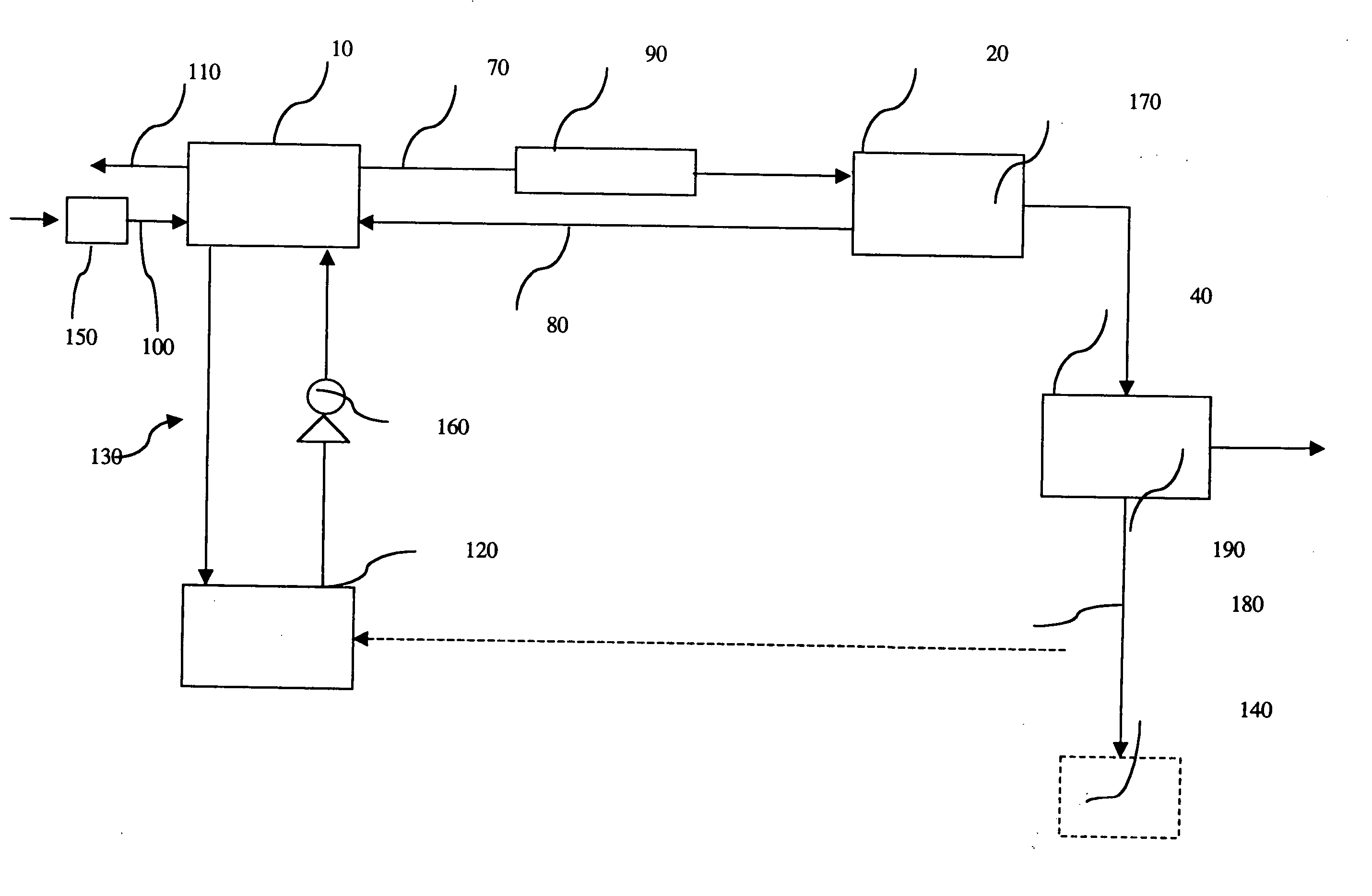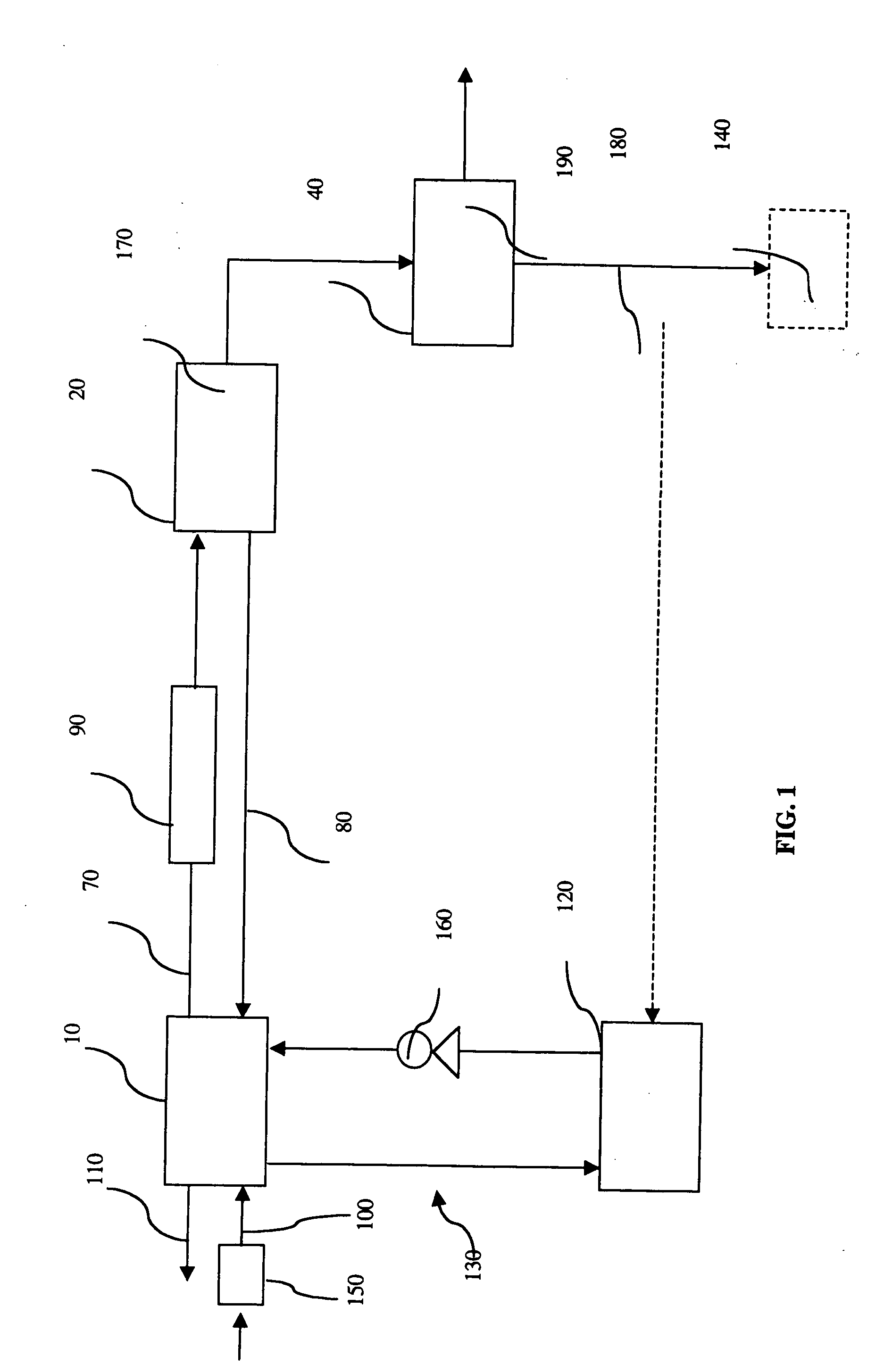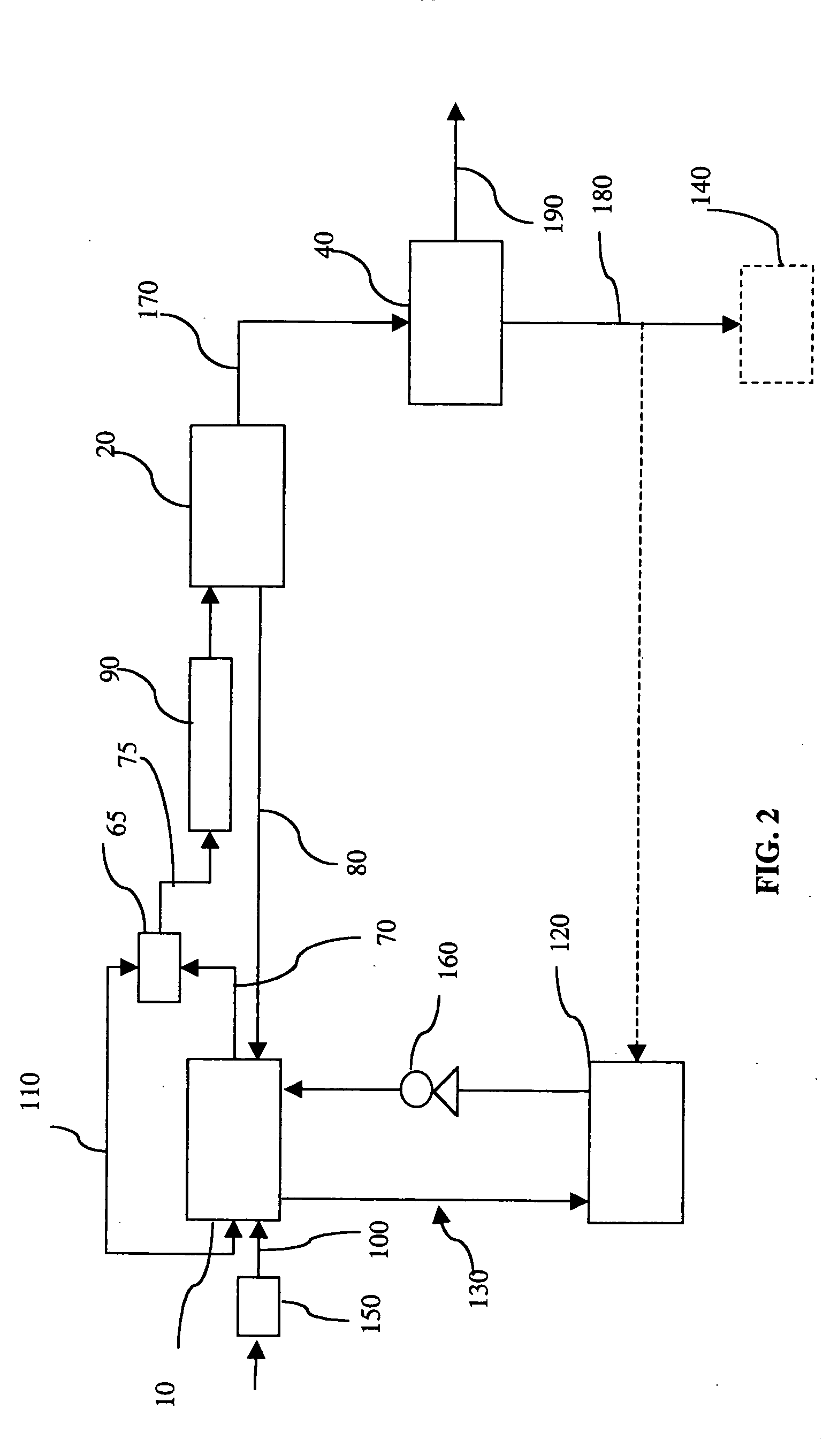Hydrogen production and water recovery system for a fuel cell
a fuel cell and water recovery technology, applied in the field of fuel cell systems, can solve the problems of high cost, high cost, and/or bulky storage systems, and achieve the effects of improving water neutrality, reducing the number of components in the system, and increasing the efficiency of the system
- Summary
- Abstract
- Description
- Claims
- Application Information
AI Technical Summary
Benefits of technology
Problems solved by technology
Method used
Image
Examples
first embodiment
[0046] Referring to FIG. 1, the hydrogen production and water recovery system according to the present invention is shown schematically. The system is connected to one or more fuel cells preferably arranged in a fuel cell stack 10. In a known manner, the fuel cell stack will usually comprise a plurality of fuel cells, but it will be understood that it could comprise just a single fuel cell. For simplicity, reference is made, in the description and claims to a “fuel cell”, and it is to be understood that this encompasses a stack of fuel cells. The water recovery system includes a hydrogen supply vessel, such as a storage tank 20 and a liquid-gas separator 40. The storage tank 20 includes a suitable storage medium, such as a metal alloy capable of storing hydrogen by forming a metal hydride. The alloy forming the metal hydride in the storage tank 20 may be an iron-titanium alloy, mischmetal-nickel alloy, or any other metal alloy that is capable of absorbing hydrogen. An example of a s...
second embodiment
[0064] As described in detail for the second embodiment shown in FIG. 2, the mixture of water and exhaust gases, as process exhaust, flows along the process exhaust passage 75 into heat exchange relationship with the metal hydride or other storage medium storage tank 20. Water is then condensed out of the mixture while heat is transferred to the metal hydride contained in the storage tank 20. The process exhaust stream is then directed to the first liquid-gas separator 40 in which substantially pure liquid water is separated from the gas. The separated gas is then exhausted to the environment through the discharge line 190. The recovered water is then directed to the electrolyzer 30 through the water return line 180 by means of a return pump 50. In the electrolyzer 30, water is electrolyzed according to the following equations:
Anode: H2O→½O2+2H++2e− (5)
Cathode: 2H++2e−→H2 (6)
[0065] The product of the electrolysis reaction is hydrogen and oxygen. The generated hydrogen is then di...
third embodiment
[0071] In the third embodiment, the present invention significantly improves the water neutrality which is a critical factor of regenerative fuel cell systems. This is especially advantageous in remote applications, where refilling the regenerative system with water is difficult. Experiments have shown that without water recovery from the fuel cell stack 10, each 30 KWh cycle needs a refill of about 15 liters of water for the electrolyzer 30 to recharge the metal hydride storage tank 20 with same amount of hydrogen (20 m3 STP) consumed by the fuel cell stack 10. The present invention reduces this amount by at least 11 liters.
[0072] The operation of the regenerative system according to the embodiment illustrated in FIG. 3 preferably alternates between two modes. The system operates in a fuel cell mode to produce power. In this mode, the water recovered from the exhaust stream as described above is stored in the first liquid gas separator 40. When hydrogen regeneration is required, th...
PUM
| Property | Measurement | Unit |
|---|---|---|
| pressure | aaaaa | aaaaa |
| pressures | aaaaa | aaaaa |
| pressures | aaaaa | aaaaa |
Abstract
Description
Claims
Application Information
 Login to View More
Login to View More - R&D
- Intellectual Property
- Life Sciences
- Materials
- Tech Scout
- Unparalleled Data Quality
- Higher Quality Content
- 60% Fewer Hallucinations
Browse by: Latest US Patents, China's latest patents, Technical Efficacy Thesaurus, Application Domain, Technology Topic, Popular Technical Reports.
© 2025 PatSnap. All rights reserved.Legal|Privacy policy|Modern Slavery Act Transparency Statement|Sitemap|About US| Contact US: help@patsnap.com



